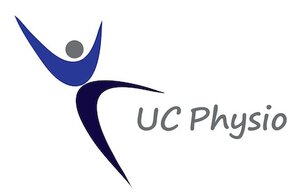Massage Therapy.
At UC Physio our physiotherapists may provide massage as part of the treatment.
When muscles or tendons are injured or impaired, causing pain and reduced mobility, Massage Therapy provides a healing treatment that holistically treats the whole body, tracing the discomfort back to the original cause, and healing both the cause of the pain or discomfort as well as the symptoms.
Our physiotherapists at UC Physio are professionals who assess you to ensure that you get the best evidence based treatments and who will use specific techniques to locate and repair damage to the soft tissue injuries within your body and assist you to perform at your physical best. Massage therapy when used in conjunction with an evidence based program by one of our team members in our Upper Coomera clinic on the Gold Coast provides a healing treatment that will have you back on the road to recovery and full mobility, assisting and speeding up your body’s own repair mechanism.
Benefits of massage therapy
Massage Therapy benefits include:
Stimulation of your blood supply which allows toxins in your muscles to be removed
Calming of your peripheral nervous system, which will ease pain and discomfort
Relaxing of muscles to improve joint mobility and allow faster healing
Improving the health of the cells within your body
Reducing overall stress
Massage Therapy is not only used to treat dysfunction, but also plays an important role in preventing further injury and assists with maintaining optimal physical health and performance.
Massage Therapy is safe for people of all ages and conditions, and because a broad range of techniques are used, your UC Physio experienced therapist will design and implement the most appropriate techniques for your existing injury or condition.
Sports performance
Massage Therapy can be specifically tailored to athletes when they have sporting injuries or ailments. Sports Massage is not a relaxing massage and can become quite vigorous at times, but it is designed to remove tightness and soreness after exercise and to ensure your body is ready for your next exercise session.
Sports massage therapy is not only used by professional athletes or people that exercise heavily, it is beneficial to anyone that exercises, even if it is only mild exercise such as regular walking.
Treatment can include one or more proven physiotherapy techniques and each individual will receive specific treatment that will assist with their injury. Your physiotherapist will explain the treatment they would like you to have, and how this will assist with your recovery.
UC Physio, in Upper Coomera, our professionals are ready to assist – for your whole family!
Don’t put up with that pain or discomfort any longer – call or email us today.
Case Study
Mr Shoulder is a 57 year old male self employed builder. These days he usually instructs and directs his younger staff but he had to performing more overhead tasks than he had done for some time. A few years ago he had his right rotator cuff tendon successfully repaired and he was concerned that he might have done some damage. A week after the unaccustomed overhead activity his neck and shoulder were still very sore. He remembered the physio massaged his shoulder after his operation and that had felt good so he decided to drop in on his way home to see if he could get some massage on it. The reception staff greeted him and explained that the next available appointment would be in 20 min. During the wait he had a coffee and filled in some basic registration details and some extra questions that the physiotherapist uses to establish functional ability and baseline measurements.
Once these were completed the physiotherapist was ready to see him. Although Mr Shoulder just wanted a massage the physiotherapist explained that massage was likely one part of the necessary treatment. A thorough assessment was performed where the physio checked for any contributions from his neck and mid back. Luckily there were no major issues in the neck but the mid back was stiff. A treatment plan consisting of a home exercise with stretch band, an exercise reaching behind his back (to be done during the day on the building site), some mobilisation (pushing the spine to increase mobility of the middle back) and some massage including trigger points around the shoulder were performed. After each stage the therapist checked how well Mr Shoulder moved his right shoulder. Mr Shoulder had to return to UC Physio 4 times over a 5 week period because although he felt much better; the physio needed to ensure Mr Shoulder was maintaining good movement strategies that would prevent any recurrence.
